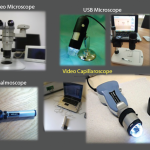 The Great Debate in Adult Rheumatology at ACR Convergence 2024
The Great Debate in Adult Rheumatology at ACR Convergence 2024
WASHINGTON, D.C.—At a Great Debate session at ACR Convergence 2024, speakers argued vigorously about the validity and utility of mixed connective tissue disease (MCTD) as a distinct disease entity in rheumatology.
Lisa Christopher-Stine, MD, MPH, professor of medicine and neurology at Johns Hopkins University School of Medicine, Baltimore, maintained that MCTD should be considered a distinct disease entity, as did Oliver Distler, MD, director of the Department of Rheumatology, University Hospital Zurich.

Dr. Christopher-Stine
Arguing the con position was Peter Izmirly, MD, professor at New York University Grossman School of Medicine and co-director of the NYU Lupus Clinic, along with Judith James, MD, PhD, professor and chair of the Arthritis and Clinical Immunology Program, Oklahoma Medical Research Foundation, Oklahoma City.
Origins of MCTD
In 1972, Sharp et al. first characterized a rheumatic syndrome that they called MCTD. As described, the syndrome had some overlapping features with systemic sclerosis, systemic lupus erythematosus (SLE) and inflammatory myositis. Patients often reported arthralgias/arthritis, swollen hands, Raynaud’s phenomenon, esophageal dysmotility and/or myositis, but renal, pulmonary, cerebral or vasculitis symptoms were rare. Dr. Sharp reported that the syndrome had a favorable prognosis, requiring only low levels of corticosteroids.1
Another key characterization was antibodies to the U1 ribonucleoprotein particle (U1-RNP), required for diagnosis. Although the antibody could be found in patients qualifying for other rheumatic diagnoses, titers were high in MCTD, and no other extractable nuclear antigen antibodies were present.
Newer Conceptions of MCTD
Characterization of MCTD has changed somewhat since Dr. Sharp’s initial description, which the con team used as a critique. Dr. Christopher-Stine acknowledged that later evidence has shown that MCTD patients are not always steroid responsive, internal organs, such as the kidney and lungs, actually are sometimes affected and the disease course isn’t always as benign as initially described. But she still defended MCTD as a disease entity with specific autoreactive immune cells, autoantibodies, clinical phenotype and genetics.
Interestingly, although MCTD was initially characterized as having a benign course, anti-U1-RNP antibodies in the context of another, already diagnosed connective tissue disease, such as systemic sclerosis, may actually increase the risk of such complications as pulmonary artery hypertension, interstitial lung disease and kidney involvement.2,3
Researchers have proposed four different overlapping sets of classification criteria for MCTD, all of which include high titer U1-RNP antibodies, Raynaud’s phenomenon and varying levels of myositis, systemic sclerosis and SLE-type features. But it remains unclear which of these is the most sensitive or specific.4-7
